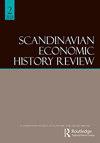运动中的生活:1900-1950年哥德堡的人口和劳动力市场
IF 0.5
Q4 ECONOMICS
引用次数: 1
摘要
20世纪上半叶,瑞典完成了工业化。很大一部分人口居住在城市。这些人的生命历程到底是怎样的呢?在这本书中,四位研究人员对哥德堡的男性和女性随机抽样进行了研究,追踪了他们在生命的各个阶段、住所、工作场所和职业之间的活动。它描述了在现代社会形成的一段时间里,普通人生活中的重要事件。本文章由计算机程序翻译,如有差异,请以英文原文为准。
Liv i rörelse: Göteborgs befolkning och arbetsmarknad 1900-1950
During the first half of the twentieth century, the industrialization of Sweden was completed. A substantial proportion of the population resided in cities. What did the life courses of these people actually look like? In this book, four researchers have studied a random sample of men and women in Gothenburg, tracing their movements through the various phases of life, and between residences, working places and occupations. It is an account of important events in the lives of ordinary people during a period when much of the modern society was formed.
求助全文
通过发布文献求助,成功后即可免费获取论文全文。
去求助
来源期刊

SCANDINAVIAN ECONOMIC HISTORY REVIEW
ECONOMICS-
CiteScore
1.60
自引率
16.70%
发文量
20
期刊介绍:
Scandinavian Economic History Review publishes articles and reviews in the broad field of Nordic economic, business and social history. The journal also publishes contributions from closely related fields, such as history of technology, maritime history and history of economic thought. Articles dealing with theoretical and methodological issues are also included. The editors aim to reflect contemporary research, thinking and debate in these fields, both within Scandinavia and more widely. The journal comprises a broad variety of aspects and approaches to economic and social history, ranging from macro economic history to business history, from quantitative to qualitative studies.
 求助内容:
求助内容: 应助结果提醒方式:
应助结果提醒方式:


